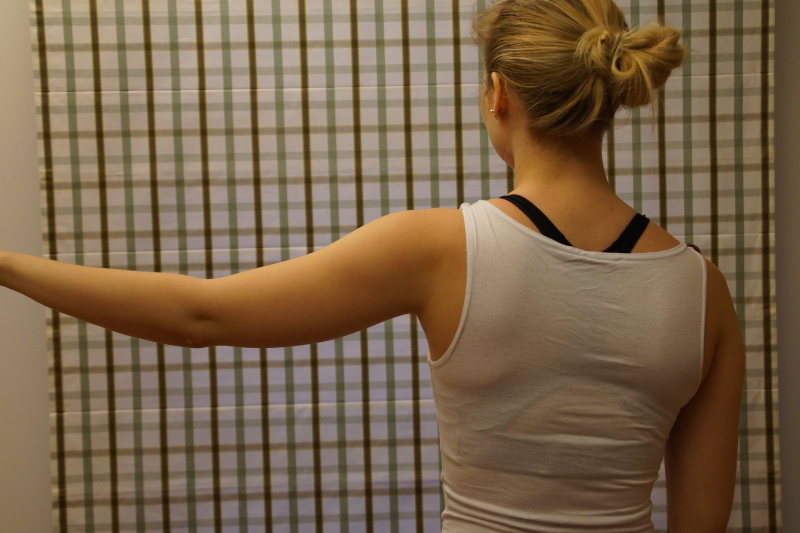
Shoulder bursitis symptoms?
A shoulder subdeltoid or subacromial bursitis is frequently seen, as well as a shoulder arthritis and tendinopathy.
Because of the close anatomical relationship between e.g. bursa and tendons, the diagnosis of either pathology might be challenging. However, I would like to share with you some clinically interesting tips and trips, that also might affect your treatment strategy.
After all, that's what orthopaedic medicine Cyriax is about: how to reach a useful diagnosis in a practical and fast way and how to create an efficient treatment strategy.
I am convinced that it is an illusion to think that each shoulder pathology will react well on a physiotherapy treatment plan, including exercises etc.
Sometimes, some lesions react far better on infiltration techniques instead...but, it's all about patient selection.
You would like to find out more about efficient clinical reasoning and adapted treatment techniques? Why don't you join the exclusive Mastermind private training in modern orthopaedic medicine Cyriax?
Acute subdeltoid bursitis ?
The patient describes a very typical history:
mostly ,without any injury, in the course of two or three days he loses almost all capacity to abduct his arm and suffers from constant pain within the C5-dermatome. The patient is mostly younger than 65 years.
In an acute shoulder bursitis the non-capsular pattern is clinically obvious :
active and passive abduction are severily limited and painful, both rotations are less limited, but also quite painful. Several resisted tests such as abduction and lateral rotation could also provoke some pain (because of the compression on a inert structure during this contraction).Palpation for tenderness is usually very obvious. The palpable subdeltoid part of the bursa, as a whole, is very tender.
A shoulder painful arc cannot be elicited because of too much pain limiting the abduction.
Chronic subdeltoid bursitis ?
A painful arc mostly is a localizing sign (e.g. pointing in the direction of e.g. a tenoperiosteal lesion of the supraspinatus, infraspinatus or subscapularis).
Sometimes the painful arc is the most obvious positive test and in that case our first clinical idea is a chronic subdeltoid bursitis.
A painful arc is mostly found on active movement.
 Looking for a painful arc in the shoulder
Looking for a painful arc in the shoulder
If, by exception, the painful arc can only be detected on passive movement (because it hurts too much during an active movement and the arc cannot be found actively), then a severe calcification in supraspinatus or bursa is suspected.
We can build in some variations during the shoulder elevation :
- Normal execution --> more compression on supraspinatus
- Elevation + lateral rotation and palm up --> more compression on subscapularis
- Elevation + medial rotation --> more compression of infraspinatus
- Anterior elevation + lateral rotation --> more compression on the tendon of long head of biceps
A chronic bursitis is NOT an acute one which became chronic in due time. Those are two totally different clinical entities (Click here for more info on the acute subdeltoid bursitis).
A chronic bursitis is an irritation of part of the bursa : or the palpable subdeltoid part or the non-palpable subacromial part.
Clinical image ?
A chronic bursitis can be the result of a trauma, overuse or occurs spontaneously.
The patient describes pain in the C5-dermatome, possibly radiating into the forearm.
Typical activities such as arm activities above the horizontal, closing the bra, putting the arm in the sleeve of a coat are painful.
There is no constant pain.
If the subdeltoid part is affected, then a local painful spot will be found on palpation of the subdeltoid part. If the palpation is negative, then the subacromial part is at fault.
Which tests are positive ?
- Active elevation painful
- Passive elevation end range painful
- Passive rotations end range painful --> NO limitation on passive movements
- Painful arc
- Perhaps positive palpation for tenderness.
“Incomprehensible bursitis” ?
Sometimes we find the clinical image as described above, but, plus some other tests which are positive :
- + pain on resisted abduction
- + pain on resisted lateral rotation
If we interpret this image then, theoretically, we would come to the conclusion of an inert lesion (bursitis) and a double contractile lesion (supra- and infraspinatus). Of course this is not very likely.
Why are some resisted tests positive ?
Since supraspinatus is anatomically closely connected to the bursa, it is normal that, depending on the site of the lesion, a muscular contraction causes more pressure on an inflamed inert structure, producing symptoms.
How can we make the distinction between a real contractile lesion or
compression on an inert structure ?
--> Repeat the resisted tests from a lying position : if, in that position the tests are less positive or even negative, in comparison to the execution in a standing position, then there is no real contractile lesion.
Treatment ?
Infiltration is a very efficient treatment strategy for bursitis.
General remark :
It is clear now that we can offer a more specific clinical definition of an “impingement” ; therefore we need a good interpretation of the basic examination procedure.
Inbetween treatment sessions some taping techniques could be used to increase the subacromial distance in order to create less compression on the subdeltoid bursa. This is not a treatment but can offer temporary symptomatic relief.
In case of severe calcifications, only high energy shock wave therapy has proven to be effective (low or medium energy seems not to be efficient).
